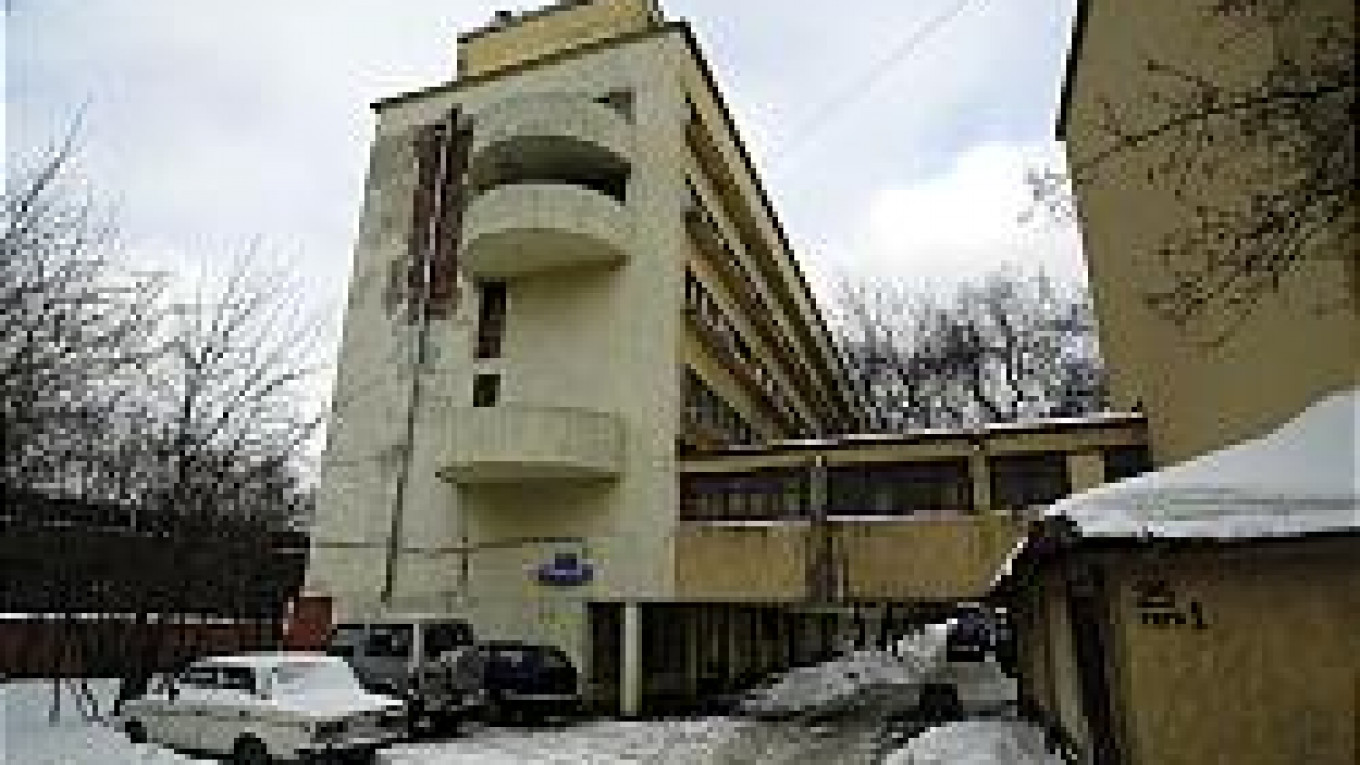Narkomfin, a huge six-story building in a courtyard just off Novinsky Bulvar, was built in the heyday of Soviet modern architecture at the end of the 1920s. Constructivism was still just about in favor, and the building was the first attempt to create not just living quarters, but a communal house where workers could live, work and move toward socialism together, even in their sleep.
Now this building, along with many other treasures of Russian architecture's golden period in the 20th century, is in danger.
Last December the World Monument Fund, a private, nonprofit organization devoted to the conservation of monuments and sites worldwide, put the building for the second time on its biannual list of 100 Most Endangered Sites.
Built between 1928 and 1930 by architects and engineers led by Moisei Ginzburg, Narkomfin was, as the WMF has written, "a six-story blueprint for communal living as ingenious as it is humane."
As well as living quarters, the building had a host of communal areas -- such as a roof garden and solarium. A separate annex connected to the main building by a walkway provided kitchen quarters, a library and dry cleaners.
"You came home, you got your pre-prepared food, you collected the children, went to sleep and went to work. It was almost like a conveyor belt," said Pavel Shulgin, the deputy head of the Russian Institute of Cultural and Natural Heritage, which nominated the building to the WMF.
One of the major contributions the building made to architectural development was its number of windows. There are huge windows on the south side to catch as much light as possible. Inside, apartments had ceilings up to 5 meters high and, influenced by the Bauhaus movement, even the interior wall colors were chosen to help the workers feel they had as much space as possible.
All of these ideas were part of the intellectual ferment that Soviet architecture was going through at the time. Ideas such as building houses with flat roofs where helicopters could land and finding ways of controlling residents' sleep and dreams. Mood music, for example, the sound of the sea, would filter through such houses, rising in volume so as to wake the workers at the right time.
However, for Narkomfin such ideas remained an unattainable utopia. The factory kitchen and kindergarten remained practically unused. Instead of housing workers from the Finance Ministry, the building became home to the Soviet nomenklatura.
And Narkomfin quickly fell out of favor as Soviet architecture was ordered by Josef Stalin to turn away from such modern ideas and retreat into Empire style.
Only in the 1970s and 1980s was its value truly appreciated and, in 1987, the building was made a city-listed building. It has never been repaired, apart from minor details, which is part its woe and part its value. The building is a wreck, but it also retains many features that make it an architectural gem.
"This monument of Revolutionary Rationalism still languishes from lack of government support, which has placed a low priority on conserving modern monuments, regardless of their significance," the WMF wrote in its report on the building.
They are not the only ones concerned. In its 2002-03 report, ICOMOS, a nongovernmental organization for the conservation of the world's historic monuments, and the principal adviser to UNESCO concerning preservation, wrote: "Russian Constructivism with its iconic, world-renowned images is collapsing."
Apart from the Narkomfin building, ICOMOS highlighted a series of early 20th-century buildings by Konstantin Melnikov that are under threat -- the Rusakov workers' club, the Kauchuk factory club and his amazing circular house built just behind Stary Arbat. It calls his Bakhmetevsky Bus Garage, which was half-destroyed in 2001-02, "one of the best examples of Moscow industrial architecture."
Shulgin's institute wants to turn the Narkomfin building into an architectural educational center, but has received no support from the city.
"They don't understand its value," Shulgin said, saying that the developers' plans he had read about involved turning it into elite apartments with an underground garage.
Tatyana Razdolskaya, the head of the Soviet architecture section at the city's department for the protection of monuments, said there were as yet no plans for the building, as the city does not have the money.
"We're not against it becoming an experimental complex for architects," Razdolskaya said, but, she said, she had seen no plans from the institute.
She denied that the bus garages had been knocked down, saying that restoration was ongoing. She also said that the Melnikov house was in good condition.
A Message from The Moscow Times:
Dear readers,
We are facing unprecedented challenges. Russia's Prosecutor General's Office has designated The Moscow Times as an "undesirable" organization, criminalizing our work and putting our staff at risk of prosecution. This follows our earlier unjust labeling as a "foreign agent."
These actions are direct attempts to silence independent journalism in Russia. The authorities claim our work "discredits the decisions of the Russian leadership." We see things differently: we strive to provide accurate, unbiased reporting on Russia.
We, the journalists of The Moscow Times, refuse to be silenced. But to continue our work, we need your help.
Your support, no matter how small, makes a world of difference. If you can, please support us monthly starting from just $2. It's quick to set up, and every contribution makes a significant impact.
By supporting The Moscow Times, you're defending open, independent journalism in the face of repression. Thank you for standing with us.
Remind me later.


